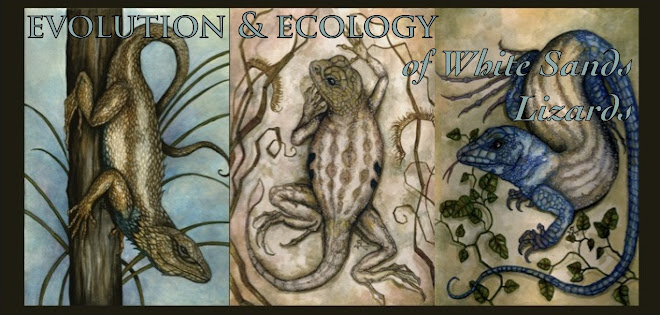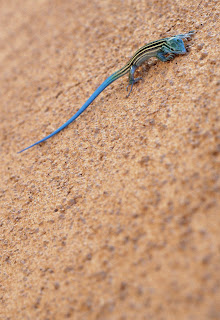I hope you enjoyed the last post in which I got a little off-topic of summing up the field season with a tonne of baby pictures...
Anyway, this time I promise to actually write a concluding blog this time.
First off, as I may or may not have mentioned before, we decided to exclusively catch S. undulatus this time. The reasoning behind this was mainly that mark-recapture of the sort that measures natural selection requires one initial capture, and at least two more recaptures following. We already have this completed for H. maculata... May/June 2011, August 2012, and May/June 2012. Because we decided to add the second species, S. undulatus, May/June of this year we decided to focus on them this season (July/August) because we had under a month and needed to increase our sample size... (yes this also means we'll be going back next spring for our last recapture!)
Well, unfortunately, recapture-rates (from lizards marked in the spring of this year) weren't nearly as good as they were for H. maculata.
 |
| The release of a little S. undulatus that certainly got going as soon as we let him go! |
 |
Overall, of the over-200 lizards we caught, only ~10% showed elastomer marks from the spring. This is surprising since after the summer last year, we had a 60% recapture rate for H. maculata. We can think of two possible reasons behind this low recapture rate. The first is that perhaps the elastomer tags are falling out. Perhaps I am not tagging the lizards deep enough and they are shedding their tags with their skin. We thing this is unlikely because we'd see a number of lizards with some, but not all of their tags remaining- i.e. the ones that were not deep enough. This doesn't seem to be the case... either lizards had tags, or they didn't. We hope that with all the photographs, scans, and gps coordinates we took, we can match up the lizards determine if they really did lose their tags.
 |
| Our "field schedule" including person-hours, lizards-captured, and some other... interesting drawings that show up after four people have been living in close proximity for far too long. |
 |
| One of the cutest/fattest lizards of all- a Texas horned lizard (Phrynosoma cornutum) |
 |
| Lizard food? Unlikely... in all the lizard guts I've dissected.. I've never seen evidence of them having eaten an Anisoptera. |
 |
| Recognize this little guy? My supervisor likes to call them the "junk lizard" of the desert. I took this action shot just after we let this one go... |
So many questions... only one dissertation (for now!)
Thank you everyone for following! Thank you to my great field assistants (Jackie Howells, Isaiah Hoyer, and Michaela Brinkmeyer), and especially the lizards for their reluctant participation in the noosing, prodding, flattening, and injecting that is my project!
Until next time, good night herps and herpetologists of the world!
-S. Des Roches


























